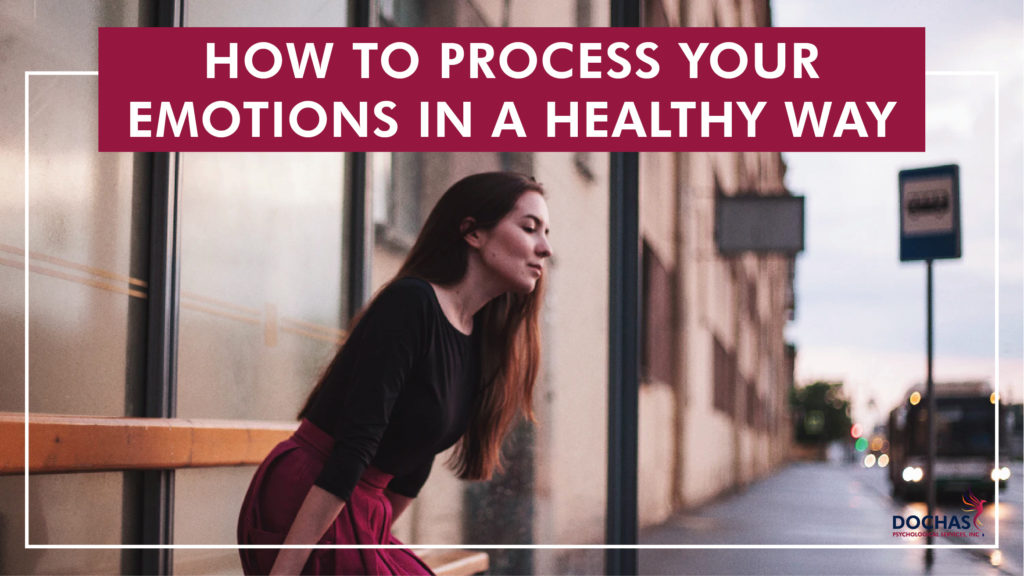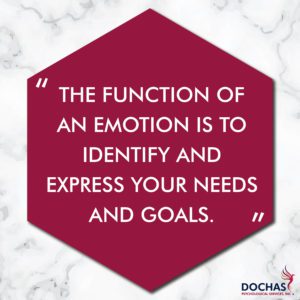Hey there! It’s Kim and I’m back this week with Part 2 of Understanding Our Emotions. Last week I talked about How to Sit With Uncomfortable Emotions, and this plays an important role in learning how to process your emotions in a healthy way. If you missed Part 1, click here to watch the video.
Learning to Process Your Emotions
Have you ever been told to just let something go, or to get over it? These are common responses from someone who might want you to process your emotions. But when we experience difficult or uncomfortable emotions, it’s never as simple as to just let them go. It’s important to learn how to identify your emotions, get comfortable with them, and process them in a healthy way to avoid feeling overpowered.
So how do we learn to actually process an emotion? In this video I help you understand why you might be feeling a certain way, and I give 4 steps you can take to process your emotions properly. Watch the video or keep reading to learn the steps!
The Function of an Emotion
Before we get into the deep stuff, I want to help you understand what an emotion is and how it functions within us.
The function of an emotion is to identify and express our needs and goals. If you’re feeling a positive emotion, that generally means that you’re in a situation that’s telling you you’re on the right track and you’re meeting your needs and goals. If you’re experiencing a negative emotion, you’re likely getting a signal that there is some sort of threat to you meeting your needs and goals.
We’re not always conscious of the situations we’re in, and whether or not we’re meeting our needs and goals. This is where our emotions play an important role – they give us the signals!
What Does it Mean to Process an Emotion?
If you’ve been to therapy before you’re probably no stranger to the idea of processing emotions. We love to teach our clients this skill! Why? Well, when we tell you that we’d like you to process an emotion, we’re not telling you to let it go or get over it. We’re actually asking you to confront the emotion rather than pushing it away. It’s so important for us to recognize what we’re feeling on a daily basis, and even more important? That we express what we’re feeling!
When we don’t practice this (sometimes uncomfortable) expression of our emotions, they can eventually explode on us. If we’re continuously put in situations where our needs and goals aren’t being met, those negative emotions start to bottle up. This pressure can actually cause us to have negative thoughts about the world, and about ourselves. So, if we learn how to process our emotions in a timely manner, we can interact with our world in a more positive way.
Alright, let’s get into the ways you can start to process your emotions!
How to Process an Emotion
1. The first step to process an emotion is identifying that it even exists. No denial here! Recognizing that you’re upset, angry, or grieving is necessary to be able to move through the motions of processing what you’re really feeling.
2. Once you’ve identified your emotion, you need to be able to sit with it. Getting comfortable with uncomfortable emotions isn’t easy, but it’s a crucial step to understanding your feelings.
3. Next you’ll want to try and pin-point why you might be experiencing this emotion. Some common reasons people experience negative emotions include old triggers, unmet needs, boundary violations, old behaviour patterns, self-judgement, or all of the above!
For me, I instantly feel fear anytime someone asks me “to talk later.” In the past this “can we talk later” phrase has most often turned into a negative situation. Now I can confidently identify that I feel this emotion because of old triggers. When you have this ah-ha! moment, you’ll know you’re on the right track to processing your emotions.
4. Now comes the hard part: Address the emotion. Try to act in a healthy way based on the information your emotion has given you. Maybe you need to create a stronger boundary, or maybe you need to work toward meeting that need or goal.
Addressing an emotion sometimes means going against what your mind or body urges you to do. If you feel like you want to go to sleep and not interact with anyone, go for a walk instead! It’s all about acting in a healthy way.
How to Deal With Unpacked Emotions
So we’ve established some useful steps you can take to learn how to better process your emotions. But what if you’ve ignored your emotions for so long, or they’re so deep and raw that you can’t access them or even make sense of them? This is where the help of a therapist can be impactful.
As a therapist, it’s my job to dig down and help you move through your emotions in a way that feels safe and healing. I also try to help you understand why your emotions are happening, and how you can better deal with them.
If you’re experiencing this inability to access or process your emotions, we’re here for you. Learn more about how we can help you on our website, or give us a call at (780) 446-0300.
For more information on understanding your emotions, check out these two articles:
http://recoveryfromaddictiononline.com/how-to-process-emotions-and-feelings/
About Dochas Psychological
Dochas Psychological Services is a well-established and trusted therapy clinic located in Spruce Grove, Alberta. At Dochas we value the idea that everyone deserves a safe space. Through connection and education, our team works hard to build a trustworthy relationship with each of our clients. It is our goal to create a community for our clients to feel like they belong.
Disclaimer
Information provided through Dochas Psychological Services blogs or vlogs are meant for educational purposes only. They are NOT medical or mental health advice. You can read more about our disclaimer here.




1 Comment.
[…] exactly build a wall around ourselves every time things aren’t going as planned. It’s all about processing our emotions, not ignoring them. We need to figure out a way to establish limits with the people around us where […]